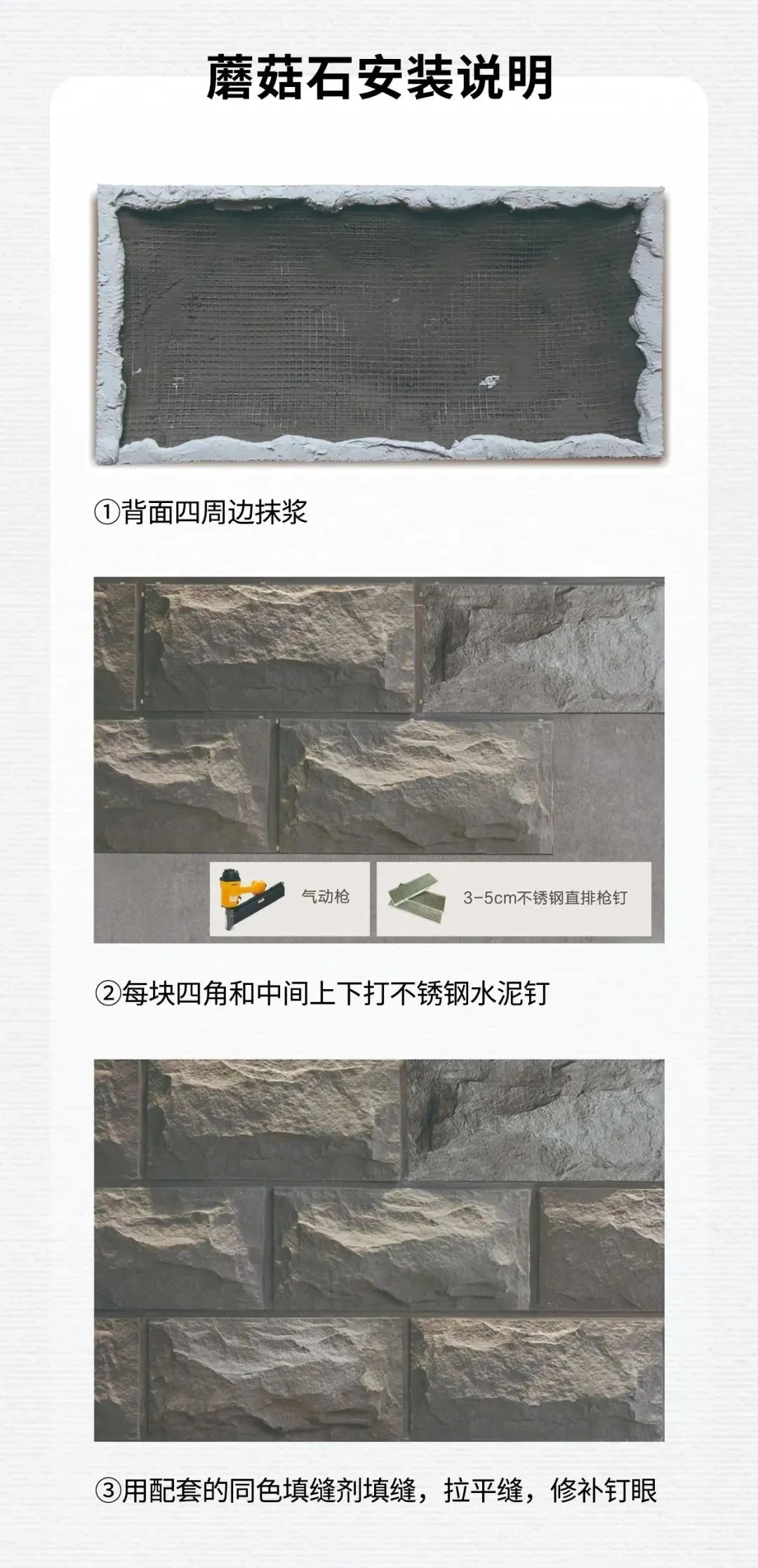Please refer to the installation video for detailed instructions.
Please refer to the installation video for detailed instructions.
If the substrate joints are uneven, you can use putty for localized leveling and sanding. After that, apply a coat of wall sealer to prevent powdering of the putty layer. Once prepared, the surface is ready for direct installation of flexible stone.
1. Use an angle grinder to bevel the edges of the product at a 45° angle
2. After filling with adhesive, attach the panel to the corner and tap it evenly using a tapping board.
For detailed instructions, please refer to the video
There are four methods to treat seams:
For detailed instructions, please refer to the video.
It is not recommended to install flexible stone with tight joints. Since flexible stone is a breathable material with a water absorption rate of about 10% (similar to ceramic products), it experiences slight expansion and contraction due to temperature changes. Therefore, it is advised to leave a 2mm blade seam (natural seam) or use color-matched grout, which enhances both aesthetics and durability.
No, adhesive performance is poor at low temperatures, so it is not recommended to install below 5°C. In winter, flexible stone products may become hard or deformed when stored in cold conditions. If this happens, place the products indoors or in the sun to allow them to naturally rebound before installation.

Yes, flexible stone can be drilled.
Changing the texture direction requires custom mold-making, which incurs additional customization and mold fees.
Changing the pattern direction can be done by adjusting the design, but it also involves customization and pattern setup fees.